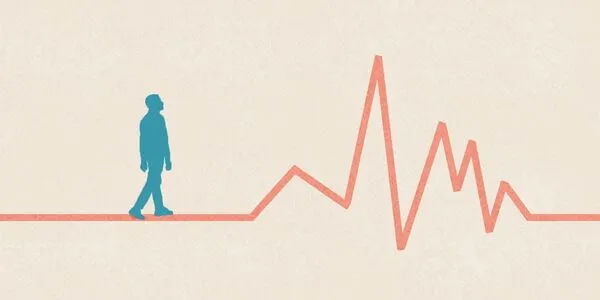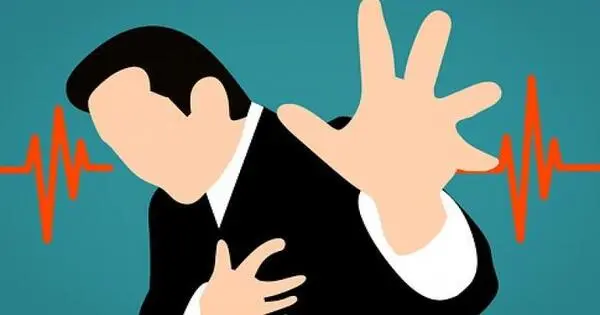Studies have found that people who are socially isolated or lonely are more likely to have high blood pressure, obesity, and other risk factors for heart disease and stroke. Additionally, loneliness and social isolation can lead to feelings of depression, stress, and anxiety, which can also increase the risk of heart disease and stroke.
Social isolation and loneliness are common in the United States, and they have negative effects on heart and brain health. Older adults and members of socially vulnerable groups, such as disenfranchised racial or ethnic groups, people with disabilities, or members of gender or sexual minority groups, may be more vulnerable to social isolation and loneliness. Data also suggests that social isolation and loneliness among many groups may have increased during the COVID-19 pandemic. More research is required to develop and implement public health interventions that will reduce the negative effects of social isolation and loneliness on cardiovascular health.
According to a new scientific statement published today in the Journal of the American Heart Association, an open access, peer-reviewed journal of the American Heart Association, social isolation and loneliness are associated with a 30% increased risk of heart attack, stroke, or death from either. The statement also mentions a lack of data on interventions that may improve cardiovascular health in socially isolated or lonely people.
Over four decades of research has clearly demonstrated that social isolation and loneliness are both associated with adverse health outcomes. Given the prevalence of social disconnectedness across the U.S., the public health impact is quite significant.
Crystal Wiley Cené
“Over four decades of research has clearly demonstrated that social isolation and loneliness are both associated with adverse health outcomes,” said Crystal Wiley Cené, M.D., M.P.H., FAHA, chair of the writing group for the scientific statement, and professor of clinical medicine and chief administrative officer for health equity, diversity and inclusion at the University of California San Diego Health. “Given the prevalence of social disconnectedness across the U.S., the public health impact is quite significant.”
Because of life factors such as widowhood and retirement, the risk of social isolation increases with age. Nearly one-quarter of U.S. adults 65 and older are socially isolated, and loneliness is even more prevalent, with estimates ranging from 22% to 47%. Younger adults, on the other hand, experience social isolation and loneliness. According to a survey conducted by Harvard University’s Making Caring Common project, “Gen Z” (adults currently ages 18-22) is the loneliest generation. Higher social media use and less engagement in meaningful in-person activities may be contributing to increased isolation and loneliness among younger adults.
Data also suggests that social isolation and loneliness may have increased during the COVID-19 pandemic, especially among young adults aged 18 to 25, older adults, women, and low-income people.

Infrequent in-person contact with people for social relationships, such as family, friends, or members of the same community or religious group, is defined as social isolation. Loneliness occurs when you feel isolated or have less connection with others than you would like. “Although social isolation and loneliness are related, they are not the same thing,” Cené clarifies. “Individuals can live relatively isolated lives and not feel lonely, and people with many social contacts may still feel lonely.”
The writing group reviewed research on social isolation published through July 2021 to examine the relationship among social isolation and cardiovascular and brain health. They found:
- Social isolation and loneliness are common but underappreciated risk factors for cardiovascular and brain health.
- A lack of social connection is linked to an increased risk of premature death from any cause, particularly among men.
- Isolation and loneliness are linked to elevated inflammatory markers, and people who were less socially connected were more likely to have physiological symptoms of chronic stress.
- When evaluating risk factors for social isolation, consider that the relationship between social isolation and its risk factors is bidirectional: depression can lead to social isolation, and social isolation can increase the likelihood of experiencing depression.
- Childhood social isolation is linked to increased cardiovascular risk factors in adulthood, such as obesity, high blood pressure, and high blood glucose levels.
Socio-environmental factors, including transportation, living arrangements, dissatisfaction with family relationships, the pandemic, and natural disasters, are also factors that affect social connections.
“There is strong evidence linking social isolation and loneliness to an increased risk of poor heart and brain health in general; however, data on the association with specific outcomes, such as heart failure, dementia, and cognitive impairment, is limited,” Cené explained.
The evidence for a link between social isolation, loneliness, and death from heart disease and stroke is most consistent, with a 29% increased risk of heart attack and/or heart disease death and a 32% increased risk of stroke and stroke death. “In individuals who already have coronary heart disease or stroke, social isolation, and loneliness are also associated with a worse prognosis,” Cené added.
During a six-year follow-up study, people with heart disease who were socially isolated had a two- to three-fold increase in death. Adults who have three or fewer social contacts per month have a 40% increased risk of recurrent stroke or heart attack. Furthermore, people who were socially isolated had a lower 5-year heart failure survival rate (60%) and those who were both socially isolated and clinically depressed had a lower (62%), compared to those who had more social contacts and were not depressed (79%).
Social isolation and loneliness are also linked to behaviors that are detrimental to cardiovascular and brain health, such as lower levels of self-reported physical activity, less fruit and vegetable consumption, and more sedentary time. Multiple large studies found significant associations between loneliness and a higher likelihood of smoking.
“There is an urgent need to develop, implement and evaluate programs and strategies to reduce the negative effects of social isolation and loneliness on cardiovascular and brain health, particularly for at-risk populations,” said Cené. “Clinicians should ask patients about the frequency of their social activity and whether they are satisfied with their level of interactions with friends and family. They should then be prepared to refer people who are socially isolated or lonely — especially those with a history of heart disease or stroke — to community resources to help them connect with others.”
Some populations are more vulnerable to social isolation and loneliness than others, and more research is needed to understand how social isolation affects cardiovascular and brain health in these groups, such as children and young adults, people from under-represented racial and ethnic groups, lesbian, gay, bisexual, transgender, and queer (LGBTQ) individuals, people with physical disabilities, people with hearing or vision impairments, people living in rural areas, and people living in under-resourced areas.
The review focuses on research aimed at reducing social isolation and loneliness in older adults. These studies discovered that senior center fitness programs and recreational activities, as well as interventions addressing negative self-worth and other negative thinking, have shown promise in reducing isolation and loneliness. The review found no studies that aimed to reduce social isolation with the specific goal of improving cardiovascular health.





